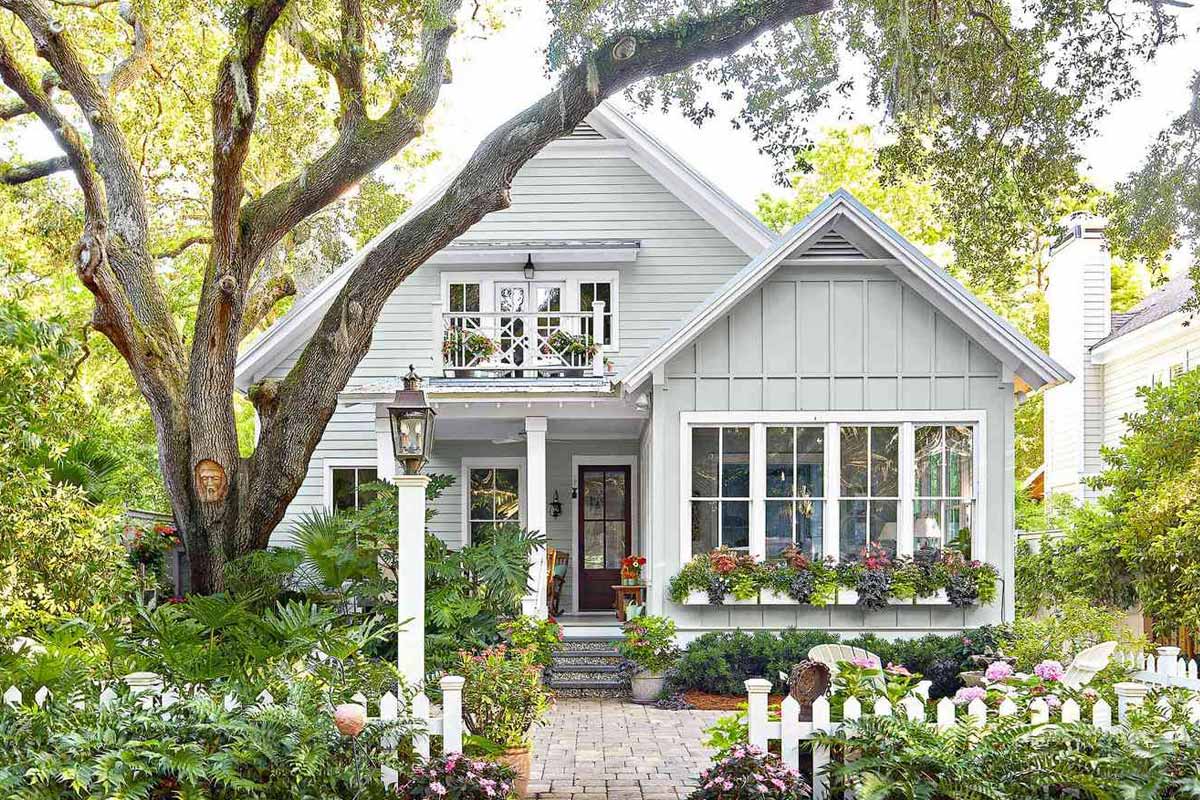Landscaping mistake sneaks up on even the tidiest yards. You plan a weekend refresh, not a jungle. I’ve been there, clippers in hand, wondering where the path went. Curb appeal shouldn’t feel like a full-time job or a fine. Let’s clear the noise and make your home breathe again.
Breathing Room Beats Busywork
Picture your house exhaling. You pull back the shrubs, and suddenly the architecture smiles. Lines reappear. Light hits the brick, not a hedge wall. That’s the quiet magic of restraint. Adam Millhouse talks about it all the time. Overstuffed borders look good on day one, then swallow the place by year five. It’s not laziness. It’s growth doing what growth does. Give each plant space to mature without elbowing its neighbor. Fewer species, smarter placement, calmer maintenance. Treat the facade like a foyer. You wouldn’t cram four sofas in there. Same rule outside. One well-chosen tree, two anchor shrubs, a grounded sweep of lawn. That mix ages gracefully. It also sidesteps a classic landscaping mistake that turns charm into chaos by next summer.
Landscaping mistake
Let’s name the habit: overplanting. We stuff beds to dodge that “new haircut” feeling. Bare mulch feels awkward, so we fill every inch. Then the shrubs bulk up and fuse into one lumpy mass. Your windows disappear. The walkway narrows. The hose snags everything. Start with the end in mind.
Check mature sizes, not nursery tags with wishful spacing. Plant like you’re designing for future you, the one who wants Saturdays back. Space shrubs with air between them. Layer heights so your eye glides, not trips. Keep corners strong and uncluttered. Let the house lead, plants support. That shift alone prevents another landscaping mistake next season. You’ll see bark, shadow, texture, not a leafy wall apologizing for the architecture.
The Cost of Too Much
Overcrowding doesn’t just look fussy. It drains time and money. Plants fight for light and sulk. Mildew parties in tight quarters. Pests love the shelter. You prune harder, buy replacements, and still feel behind. Roots can nudge foundations and trap moisture against siding. That’s not drama; it’s physics.
Let beds breathe, and airflow does half your maintenance. Choose ground covers where weeds nag you. Use mulch or pine straw to finish the scene without stuffing it. Mix evergreen anchors with a few seasonal sparks. Your landscape feels cared for, not frantic. This balance avoids another landscaping mistake while trimming upkeep. If budget is a thought, edit in stages. Remove bullies first. Keep the winners. Add in measured moves. You’ll spend less and love it longer.
Smart Moves That Age Well
Think function, then romance. Where do guests walk? Where do you rest your eyes after work? Put weight there. Frame the entry with pieces that won’t outgrow the doorway. Give trees room to stretch elbows. Skip impulse flats that solve a one-week gap. Test color in pots before you commit to a bed. Lighting matters too. Soft path lights lift everything after dusk. Keep them low and warm.
Irrigation? Set it to support roots, not puddles. Deep, infrequent watering builds stronger plants. Strong plants stay handsome with less fuss. That approach dodges a hidden landscaping mistake many homeowners never spot—forcing thirsty shrubs into shallow habits. Step back each season and edit. Add a drift here, subtract a crowd there. See the house again. Hear the yard again. You’re curating, not cramming.
Fewer Rules, Better Yard
Perfection is a myth, and a stiff one. Aim for honest belonging. Use plants that suit your climate and soil, not envy on Instagram. If you want a wild streak, give it boundaries. A meadowy swath looks intentional with a trimmed edge. A tidy hedge softens when paired with a loose perennial drift. Opposites play well outdoors.
Keep sight lines open from the street to the door. It’s a safety cue and a style cue. Tuck messy workhorses where they help, not headline. Compost behind the fence, herbs by the kitchen path, hose on a reel. Small decisions build big calm. You’ll sidestep yet another landscaping mistake just by asking one question: does this choice make the house feel clearer?
What Pros Do on Day One
They measure, and they wait, honor mature width. They prioritize anchor points. And they plant fewer, better specimens and give them room to be beautiful. They also break up mass with texture, not more plants. Wide leaves against fine needles. Glossy next to matte. Blue-green near fresh lime. Your eye reads balance, not volume. If you’re tempted to stuff a gap, mulch it and walk away for a week. Sit on the porch and look at it in different light. Most urges fade. The keepers stick. That patience dodges another landscaping mistake and saves you from ripping out next year’s headache.
Maintenance Without Misery
Trimming shouldn’t feel like punishment. Choose forms that hold their shape with a light touch. Prune after bloom, not whenever boredom hits. Clean tools between cuts, and you’ll dodge disease. Feed soil, not just plants. Compost and leaf mold do quiet miracles. Water early, not late. Train roots down, and you won’t babysit every hot spell. Keep mulch off trunks so they don’t rot wearing a damp scarf. These small moves add up. They keep you smiling at the mailbox instead of plotting a yard sale for your shovel. They also steer you wide of a repeat landscaping mistake that steals weekends and enthusiasm.
A Yard That Feels Like You
The goal isn’t a magazine cover. It’s a place that welcomes you home. Space to breathe. A front step that isn’t hidden. A bed that ages with grace. Keep edits gentle and steady. Let plants show you who they want to be. When in doubt, remove rather than add. And when excited, test rather than commit. When you finally see the house again, you’ll feel it. Quiet pride. Less panic. More porch time. That’s the reward for dodging the easy landscaping mistake and choosing a clearer, kinder path.
